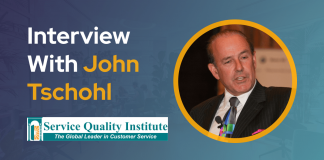Hi Eric, tell us about yourself and your background.
Hello! I am a first-generation Chinese-American with a deep love for crafting better customer experiences. I fell in love with brands at a young age, reciting everything from cereal commercials to insurance tag-lines. In fact, I’m sure that watching those adverts is what helped me learn the English language, and to this day I still collect vintage print ads that keep me inspired and excited. Though I have yet to find 15 minutes to save 15 percent or more on my car insurance, I can say with a degree of certainty, ‘what makes a Subaru, a Subaru’. My career has taken me down a winding path; from commercial photography for luxury automotive, to product management in the nascent Williamsburg ‘WeWork’ scene, to digital transformation consulting at Deloitte Digital, I’ve since found myself dedicated to building, nurturing, and growing CX teams for design agencies across industries including retail, healthcare, and mobility. Today, I am thrilled to be joining the digital financial services team at Walmart as the principal of product innovation, responsible for helping architect the strategic vision, roadmap, and service blueprint dedicated to helping millions of Americans “save money, live better”.
How did you first start working in the CX space?
I’ve been a freelancer for most of my career; I’ve always loved the freedom of being able to work on select client projects while also having the mobility and freedom to do my own ethnographic research. After achieving major career milestones in guiding Adidas through a series of product and spatial design initiatives, I decided to take on one of the most complex problems inundating American consumer experiences: the biopharmaceutical and integrated healthcare industry. As an engagement planner at Area 23, I supported major innovation work-streams and treatment launches across rheumatology, cardiology, oncology, and women’s health. While at the Havas network, I oversaw the future of customer experience campaign for Sanofi Diabetes, where we navigated one of the largest medical practices through COVID-19. Most recently, I was a strategy director and founding member of the global healthcare leadership council at AKQA, where we were awarded over $2.5MM in CX work across Mayo Clinic, United Healthcare, and Olive AI in an effort to reinvent and transform the delivery of care. The health and wellness industry is a space where the consumer-brand relationship is often strained; we have the responsibility to leverage a renewed societal scrutiny and passion to craft more equitable customer experiences, and aid practitioners in being able to better serve their patients.
What are some of the common misunderstandings related to customer experience?
Andrew Lang, the revered critic and anthropological novelist once said, “Most people use statistics like a drunk man uses a lamppost; more for support than illumination”. My experience certainly corroborates his claim; user personas and our collective reliance on static data have contributed to over-generalizing and misinterpreting consumer life-cycles. Too often we are obsessed with correlative findings and construe them as human insight. Strategy teams are repeatedly backed into a corner where quantitative models are leveraged as proof points in retrospect, rather than being a proactive process in interrogating contextual intent; customer motivations, pain points, barriers, or behaviors. To end on a more optimistic note, I quote the statistician, George E.P Box, “all models are wrong, but some are useful.”
Have you seen any interesting new trends in eCommerce this year?
The obvious one for me has to be telemedicine and telehealth applications, thanks to the investments made by new category competitors like Microsoft, Google, Amazon, and Apple. DTC pharmacies and digital care providers are propagating faster than ever, and it comes as no surprise that the last project I worked on during my time at AKQA was to help United Healthcare develop the largest omnichannel wellness hub combining HSA/FSA/OTC products with Rx, live urgent care, primary care, mental health consultations, patient communities, and educational content. The more interesting question to ponder is whether auxiliary provider audiences like NP/PAs, pharmacists, and professional caregivers will continue to enjoy expanded responsibilities — like being able to write scripts — beyond the pandemic. Similarly, will we continue to allow therapists on digital platforms to provide their services across state borders? eCommerce has given consumers more choice and responsibility than ever, it is now our turn as product designers and marketers to ensure that we are developing these platforms to better guide and empower the customer in making said choices.
eCommerce boomed in 2020, and consumers started leaving more product reviews online. How can we make the most out of this momentum?
Sean Lane, CEO of Olive AI claimed that 2021 is ‘the year of the customer,’ as he and his team pursue the radical transformation of healthcare by automating provider and payer administrative tasks — among many other capabilities. Brands in health-adjacent industries like fitness and athletic-wear have been leveraging the power of customer feedback to fuel their product development. Lululemon is currently running a series of instagram ads touting a new feature — zipper pockets — on their workout shorts, citing a user review as the inspiration behind the iterative design. Adidas has long developed their marquis Ultraboost sneaker by collecting and analyzing the feedback from thousands of runners around the world. I myself like to begin the research process for any product roadmap or service blueprint by first conducting social listening monitors and scraping for consumer sentiment. Collectively, this is as good a moment as any for product and marketing teams to work closer together in translating user insights into tangible, directional guidance for R&D. It’s common for us to turn towards services like Yelp or Glassdoor when we want to know the honest truth about our next meal or career pivot, but the true beauty in uncovering unfiltered biases is that we can begin plotting emotional love/loss lines across our favorite CX frameworks; vitamins vs painkillers, the kano model, jobs to be done (social, emotional, functional tasks), or my personal favorite: Brian Chesky’s (founder of Airbnb), “what would a 5-star experience look like?” exercise.
What are some CX companies/solutions you’re keeping your eyes on right now?
There are quite a few organizations that are pushing the boundaries of what’s possible in terms of customer experience; Open AI is developing better foundations for chatbots — that will have massive implications on customer service and brand experience success rates; numerous fintechs like Tally, Northstar, or Even are invested in advocating for better financial literacy and equity; the sharing economy has taken over the mobility space, encouraging last-mile services like Uber and Lyft to contend with the likes of Turo, Getaround, and Zipcar. In each of these use cases, we see a sincere effort to reinvent business models that haven’t always worked in the customer’s favor. I hope that we can overcome the traditional dilemma where pursuing consumer equity does not derive immediate, or in many cases, long-term financial gain or favorable profit margins for shareholders.
So many things changed in 2020. While some things are going to return to “normal,” what are new trends and habits you think will stay with us in the long term?
For one, I sincerely hope that outdoor dining becomes a mainstay in the restaurant industry. Especially in crowded cities like NY, it provides residents with the opportunity to cultivate a nightlife culture that doesn’t only revolve around barhopping / drinking the way that night markets or farmer’s markets do in Asian and European metropolises. I’ve also noticed a significant improvement in infrastructure; better-paved roads, more efficient public transportation, a diaspora of cycling lanes; the pandemic, for all the damage it has done, has also contributed to the lessening of our reliance on individual car ownership in urban centers, and has instead encouraged us to look for alternative ways to stay mobile. That is certainly a silver lining worth celebrating. I also hope that the pervasive adoption of QR codes, faster last-mile delivery and shipping, intentional design for sanitation in public areas, and momentum behind simplifying an otherwise notoriously complex healthcare landscape, are all trends that will stay with us in the long term.
Do you believe focus groups are still relevant in the era of eCommerce? Why?
Focus groups will always hold value in my mind for one critical reason: they illuminate the gaps in our research; contextual considerations that influence how customers might approach a brand no matter how niche the industry it belongs to. One example I’ve fine-tuned over the years in debating incumbent pharmaceutical clients sounds a bit like, “well we don’t need to use consumer brands as a point of reference, because we are marketing our products to a more specific audience: doctors.” My response? In reality, no consumer, whether a surgeon or a nurse practitioner, operates their respective lives in a silo. Of course we need to consider the immediate threats and competitors in our space, but I also urge my clients to interrogate the broader category innovators, and socio-cultural / technological standard-defining businesses that will disrupt tomorrow’s delivery of care; at the very least, the experiential expectations that our customers will bring to the table, further contributing to the delta between consumer and healthcare brands. When it comes to a hospital system, I’m conducting focus groups around the idea that category-agnostic brands can be just as likely to influence the way we reach and engage consumers tomorrow. It may come as a surprise, but there is no doubt in my mind that even established champions like Mayo Clinic will soon be up against the likes of WeWork, CitizenM, ADT, Nest, Amazon, Walmart, CVS… the list goes on. The true value in having roundtable discussions with various stakeholders from different backgrounds, is to get a more holistic perspective on not just where we are today, but where we should be headed tomorrow.
Last but not least, what is your favorite CX metric?
There’s no business like repeat business. The best affirmation comes in the form of happy, loyal customers that find your products, services, or experiences to be irreplaceable. I look for sound-bytes like positive customer reviews, voluntary social chatter, and user-generated content. The last and most indicative phase of any good, integrated marketing campaign, is the advocacy phase where customers amplify a brand presence’s through nurturing a community on your behalf.






